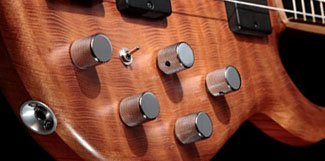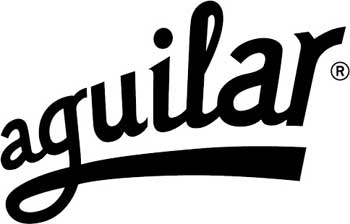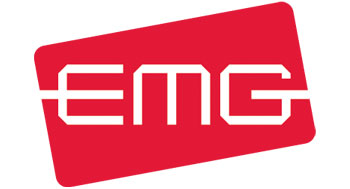- Home /
- The Best Bass Preamps – Your Route to Perfect Tone!
The Best Bass Preamps – Your Route to Perfect Tone!
If you are looking to improve your bass tone and upgrade your instrument’s versatility, an onboard preamp can be an exceptional tool. These tiny devices may fit into the body of your bass without altering the frame, yet they can give you a major boost in control over your tone and output.
Unfortunately for new players, it can be hard to find the perfect preamp if you don’t know where to start. The market is saturated with dozens of options, and the variations in style and price don’t make it any easier.
This is where we come in! In addition to stocking a wide range of the best bass preamps, we have created this handy buyer’s guide to help you find the best option for you from the hundred-plus models we carry.
We will start by breaking down the differences between various manufacturers of onboard preamps, to help you get a better feel for the strengths and weaknesses of each type.
Then we’ll move on to list some of the features you should look for in any preamp, before answering a few of the questions many first-time buyers have about selecting which preamp to use.
Types of Bass Preamps
Though almost all onboard preamps follow the same general setup, the specific models may still vary by manufacturer. In this part of the guide, we’re taking a look at some of the most popular preamp manufacturers and their general styles to help you get a better feel for your options.
The best onboard preamp for you may also vary depending on why you’re looking to add a unit to your rig.
Different manufacturers offer different strengths. For example, some preamps are great at boosting your signal; others offer more precise EQ controls; while some give you a great all-around option.
Beyond the manufacturer, you should also evaluate each model individually to get a feel for its characteristics and response.

With wildly popular models like the 3B in their lineup, Nordstrand is one of the most successful preamp manufacturers on the market today. Their designs focus on smooth, pristine clarity within a reasonable boost/cut range.
While these models don’t offer quite as much range as some other brands (most Nordstrand EQ bands run between 10-12dB in boost and cut capability), many players favor Nordstrand because they can use the whole range without allowing any frequency band to overpower the rest of their signal.
In terms of flexibility, Nordstrand is also one of the best in the game, offering models to fit all sorts of different pickup configurations and knobs. No matter what type of bass you play, you’ll be able to find a Nordstrand preamp to fit it!
- Smooth, balanced range
- Moderate flexibility in boost/cut
- Wide product range will suit all players
Features of Nordstrand Preamps
New York City-based Aguilar has been manufacturing outstanding onboard preamps for nearly 30 years. They bring a ton of firepower and expertise to their designs, with famous bassists like Adam Clayton endorsing the company’s products.
Aguilar’s preamp lineup is rather streamlined, featuring three main models that cover a broad range of needs for bassists in all styles. On the budget end of the spectrum, the OBP-1 offers boost-only functionality while preserving the natural dry tone of your bass.
The high-end OBP-3 is one of the most famous models in the onboard preamp market – and for good reason. With a massive 18dB of boost and cut on tap, the OBP-3 has enough power to handle any genre of bass playing. The incredible 324 hours of battery life doesn’t hurt, either!
- Massive boost and cut capability
- Streamlined product range
- Boost-only model available for budget users
Features of Aguilar Preamps
Another mainstay in the aftermarket bass community, Bartolini’s preamps provide outstanding boost and cut capabilities with plenty of knobs available to fulfill all your tonal needs. Many of the company’s preamps feature push-pull compatibility to change your tone with just one smooth motion.
You’ll also find that Bartolini preamps can work with switches to help you activate a boost without any hassle in the middle of your set. The flexibility and versatility help set Bartolini models apart from other preamps on the market.
However, be aware that many Bartolini preamps will take up a lot of space in the electronics cavity of your bass! Depending on the model you play, you may not be able to find the space to drop a Bartolini straight in.
If you want to avoid carving holes in your instrument, you may need to conduct some measurements before you decide on a Bartolini model.
- Strong boost/cut range (12-16dB, depending on model)
- Versatile knob configurations
- Push/pull and switch options available
Features of Bartolini Preamps
EMG may be best known for their active pickups, but the company also carries an impressive lineup of onboard preamps to help you find the best possible tones. One major advantage of these systems is that they come with knobs included – all you need to do is drop the preamp into your bass and find space in your pickguard to position the units.
EMG also sells a ton of different options for basses of all sizes. If you’re not ready to commit to a full-blown three-band EQ preamp, but still want a bit more control over your tone, their single-knob mid frequency adjusters are a great place to start.
It’s also hard to beat the flexibility and size of these units. Because they come with knobs attached, installation is much easier than it is for some competing models. They are perfect for beginner modders yet offer more than enough power and precision for advanced players as well.
- Ship with knobs attached
- Smaller models (including single-knob preamps) perfect for new modders
- Easy to configure and install
Features of EMG Preamps
Seymour Duncan is another aftermarket manufacturer best known for their pickups – but don’t forget about their preamps! The company offers everything from budget designs for new players to high-powered preamps that can suit the needs of heavy-duty bassists.
Their stripped-back models are particularly useful for players who want the benefits of a preamp without committing to a bulky, high-priced device. For around $100, you can get a device with two-band EQ and plenty of boost available, optimized for either passive or active pickups.
However, this is not to say that Seymour Duncan is only a low-end manufacturer! Their high-end models feature three-band EQ setups, with as many as four knobs to give you added control and precision. The extra-high headroom and power available make these preamps a great fit for almost any genre.
- High headroom adds versatility
- Streamlined budget options deliver value
- High-end preamps for advanced players
Features of Seymour Duncan Preamps
While Glockenklang preamps may be some of the more expensive models on the market, the boutique manufacturer’s designs have earned acclaim for their versatility and outstanding customization options.
Glockenklang’s preamps contain as many as five knobs, allowing you to adjust every possible frequency in your output.
Some models also include an active/passive control, which allows you to toggle between active and passive sounds. While setting the preamp to passive mode will prevent it from boosting new frequencies into your signal, it can give you a smooth vintage tone that will bring you closer to classic passive bass models throughout the instrument’s history.
u can also use the treble-bass stack setup on certain Glockenklang preamps to achieve greater control over your sound with the same number of knobs. These designs are more streamlined but keep the same functionality as their full-size counterparts.
- Treble-bass stack saves space
- Active/passive toggle control
- Plenty of knobs to help you fine-tune your sound
Features of Glockenklang Preamps
Features of Onboard Bass Preamps
Before you settle on a specific preamp, it’s important to know everything that an onboard unit can do. The features listed below are some of the most important elements of any preamp. While each unit handles these a bit differently, they all contain very similar setups with regard to these factors.
If you’re struggling to decide between two different models, comparing them on their features can be a great way to find some clarity.
If you haven’t figured out which model to buy, on the other hand, pick the features that you like the most and you will be able to narrow down the field of options.
Either way, read on to find out everything you need to know!
Buffer/Limiter
These features are the first things that a preamp must do. While equalization and more advanced features are important as well, many people buy a preamp just for the buffer alone.
In more specific terms, a buffer insulates your signal against sharp changes in volume or clipping when it reaches your amp. This keeps your bass sounding pristine and just as you intend it!
A limiter is a very similar feature to a buffer – as the name implies, it limits the maximum output of your bass when it goes to your amp. This can prevent the signal from distorting as it passes into the amp. While many players like some distortion in their sound, you don’t want it at this stage of the chain! Instead, a distorted signal can clip and sound horrendous, particularly in a live setting.
Equalization
Regardless of the other features it offers, every preamp will offer some sort of equalization mechanism. This is one of the most important parts of the system and it’s an essential consideration as you browse the market.
After all, most players choose to add a preamp to their rig precisely because they want more control over how their bass sounds.
But while every preamp offers EQ features, different models will have different bells and whistles. If you’re looking for the greatest amount of control, one rule of thumb is 'the more knobs, the better'.
This is because the more knobs you have to control different parts of your tonal spectrum, the greater the range of frequencies you’ll be able to isolate, and the more change you’ll be able to make to the tone of your bass.
However, not all EQ settings are created equal! To really know what you’re getting in a preamp, you’ll have to familiarize yourself with some jargon.
One phrase is a sweepable frequency range. This means that you can change which frequencies the knob in question adjusts. In other words, some onboard preamps might use one knob that can control anywhere from the low midrange (near the bass frequencies) all the way up to the high midrange and trebles.
A sweepable frequency range can be very helpful if you want to zero in on a particularly elusive tone. If all of the knobs on your preamp are sweepable, you can also play around with which knobs adjust which frequencies.
For example, if you want a lot of control over the bass but don’t need to change many treble frequencies, it’s easy to sweep your knobs towards the bass and gain greater control there while minimizing your control over the high end.
One other essential term for you to know is ‘parametric EQ’. This is a fancy way of saying that each knob that controls certain frequencies has another switch or dial to control which frequencies you’re boosting or cutting. Many professional players favor parametric EQ setups because they are a quick and easy way to adjust sweepable EQ knobs and gain exceptional control over your tone without any extra hassle.
Maximum Boost and Cut
All onboard preamps contain active electronics. This means that, unlike the tone controls on passive basses, they can boost extra frequencies into your signal as well as cut them out.
However, while every preamp you look at will include a boost, certain models will be able to boost and cut your signal by greater amounts than others. This is referred to as the ‘maximum boost/cut’ of the preamp.
Figuring out how much boost capability you need depends on why you’re looking at a new preamp. If you want to add an onboard unit to your rig so that you have a buffer between your pickups and your amp (which can improve your tone), then the boost function might not be as important to you.
On the other hand, many people buy preamps primarily to change up their EQ patterns. If you plan on using the preamp’s equalization settings often, a model with plenty of boost available will let you take advantage of more unique sounds.
Most preamps range between 10db and 20db of maximum boost. This means that they can inject up to 20db of new frequencies into a certain part of your signal. Most players take advantage of these capabilities for the bass side of their signal, but some players prefer to boost the mids and trebles as well.
While the extra power can certainly be helpful, in some cases it might overpower your signal if you’re not careful. When you crank the boost, the extra frequencies can dominate the other parts of the range. If you’ve never used active boosts before, you might want to experiment with some less powerful models before you make the leap to a preamp with a ton of boost available.
On the other side of the coin, preamps can also cut out a lot of the same frequencies that they add into your signal. This function works similarly to the tone controls you’ll find on your standard bass (whether active or passive), but preamp knobs are often more powerful. They are a great tool to adjust your tone, resulting in more flexibility over your final sound.
In addition to the maximum boost or cut, certain bass preamps might also incorporate other static boosts that you can apply to your sound at all times. The most common are a bass boost and treble boost – two similar applications that boost the opposite ends of your signal.
If you play live and need some onboard boosts to help you switch quickly between different settings for songs in your setlist, these ‘preset boosts’ may be just what you need. They can be a crucial tool in constructing your unique sequence of sounds, and they won’t require you to fiddle around with any different settings on your amp or preamp.
Active/Passive Push-Pull
Another major feature of onboard preamps is that they often incorporate push-pull knobs that are capable of switching your bass between active and passive modes.
Because both active and passive units have different sounds (which certain bass players find desirable), having the ability to switch between the two can be a major help.
Pickup Compatibility
Thankfully, the wide variety of preamps available on the market means that you shouldn’t have any trouble finding a great unit that fits your bass perfectly. However, it can still be important to consider the type of pickups that a preamp was designed for.
For example, you wouldn’t want to consider a preamp that’s optimized for smooth, warm styles like jazz and blues if your pickups are voiced for heavy metal or hard rock!
An even more important aspect is to make sure that your preamp can accommodate the number of pickups on your bass. Most preamps can easily handle both one- and two-pickup basses, though some units may be specifically designed for one-pickup models.
If you want to get the best possible tone for your instrument, it may be a good idea to look at a preamp that only handles one-pickup basses.
Size and Shape
Finally, depending on the shape of your bass, the amount of room in the electronics cavity can vary. In certain cases, you may need to consider the size and shape of the preamp models you’re looking at – some might not fit in the empty space of the body cavity.
Of course, this is a problem that is quite easy to get around. If you have the know-how, you can always cut an extra hole in the body to house the preamp and wire it to the rest of the electronics. Even if you do have the space without cutting more wood out of the body, you will still need some basic soldering knowledge in order to install the preamp yourself.
If you’re not comfortable installing the preamp on your own – particularly if it involves cutting the body cavity open – any professional guitar tech or handyman should be able to install your model without too much trouble.
Regardless of how you plan on installing your new preamp, it’s always a good idea to remove the pickguard from your bass and measure the extra space in the body cavity yourself.
Taking a brief look at the available space will help you narrow down the different models on your list. If you find out that your current electrical setup takes up almost all of the space on its own, you’ll be able to adjust your plans accordingly, including factoring in the price of a professional installation.
Frequently Asked Questions
If you are still struggling to home in on the right preamp for you, check out these frequently asked questions. They might help you decide between different models depending on your priorities.
Do I Really Need a Preamp for My Bass?
This is naturally one of the first questions many people ask when they consider whether or not to buy a bass preamp. Considering how many famous bassists have gone their whole careers without ever incorporating a preamp, it’s certainly a fair question to ask!
The answer depends on your specific playing style and where you will be using your bass rig.
Preamps are most useful for their buffering capabilities, boosts, and equalization features. While any bassist can take advantage of the boosts and extra EQ to improve their tone, these features will be most potent in a live setting.
The same goes for a preamp’s buffer, which is designed to optimize the volume of your signal between bass and amp. While it can be valuable for tonal reasons in the practice room, it’s highly unlikely to make a significant impact outside of the live stage.
If you never play gigs (and don’t plan on joining a live group in the future), a preamp might be overkill. Ultimately, you will have a hard time hearing all of the unit’s benefits and won’t be able to harness the power of a preamp to keep your tone pristine in even the most difficult stage environments. On the other hand, if you record in studios, a preamp may be an indispensable tool for your tone.
Can I Use a Preamp Off Stage?
As we mention above, there are perfectly valid reasons you might want to buy a preamp beyond controlling your live rig. A good preamp can make a noticeable impact on your tone, particularly with the extra control over the equalization of your output.
Most basses (and pretty much all amps) come with sets of tone controls already onboard. So, why would you need to add a third set of equalization controls in a preamp?
The answer lies in the combinations of tones you can achieve with the extra level of control. By adjusting the controls on your bass, preamp, and amp separately, you can unlock a world of new tones that you might not have had access to before.
Preamp EQ controls also tend to be far more complex than the tone knobs you will find on your instrument or amp. With features like sweepable frequency ranges and parametric EQ settings, a preamp will allow you to dial in just the right amount of every frequency you can think of. This can be a major bonus in the practice room and particularly in the recording studio.
How Can I Be Sure My Preamp Will Work with My Pickups?
Technically, a preamp will just boost or cut certain frequencies from your signal. This means that there is no real reason a preamp wouldn’t work with any set of pickups.
However, certain pickups pair better with different preamp models than others. If you are in the market for a preamp, it’s worth taking some extra time to make sure you get a model that syncs well with the rest of your bass!
The best way to evaluate whether or not a certain preamp will sound good with your current pickups is to take a look at the frequency ranges. Because pickups, like preamps, carry their own unique sonic signatures, models that emphasize the same frequency ranges may sound better together than a preamp that boosts or cuts frequencies that your pickups don’t naturally excel at.
Can I Mix Active Pickups with an Onboard Preamp?
One concern many players have is how their active pickups might interact with an onboard preamp. It’s true that both pickups and preamps contain active electronics, which cover similar functions for your bass and render a preamp redundant for some players.
However, a preamp can still serve as a buffer and boost; most units also offer more advanced equalization controls than you will get out of active pickups. For advanced players, these features may still make an onboard preamp a good bargain, even if you do have active pickups already installed in your bass.
Wrapping Things Up
The world of aftermarket preamps can be intimidating to inexperienced bassists. However, the manufacturers and models we have outlined offer incredible choice when it comes to completely transforming the sound of your instrument.
If you are dedicated to getting the best tone out of your rig – particularly in a live setting – a preamp may be just what you need.
Have a good browse of our store and see what suits you best. If you have any questions about choosing the right preamp for you, please get in touch!






